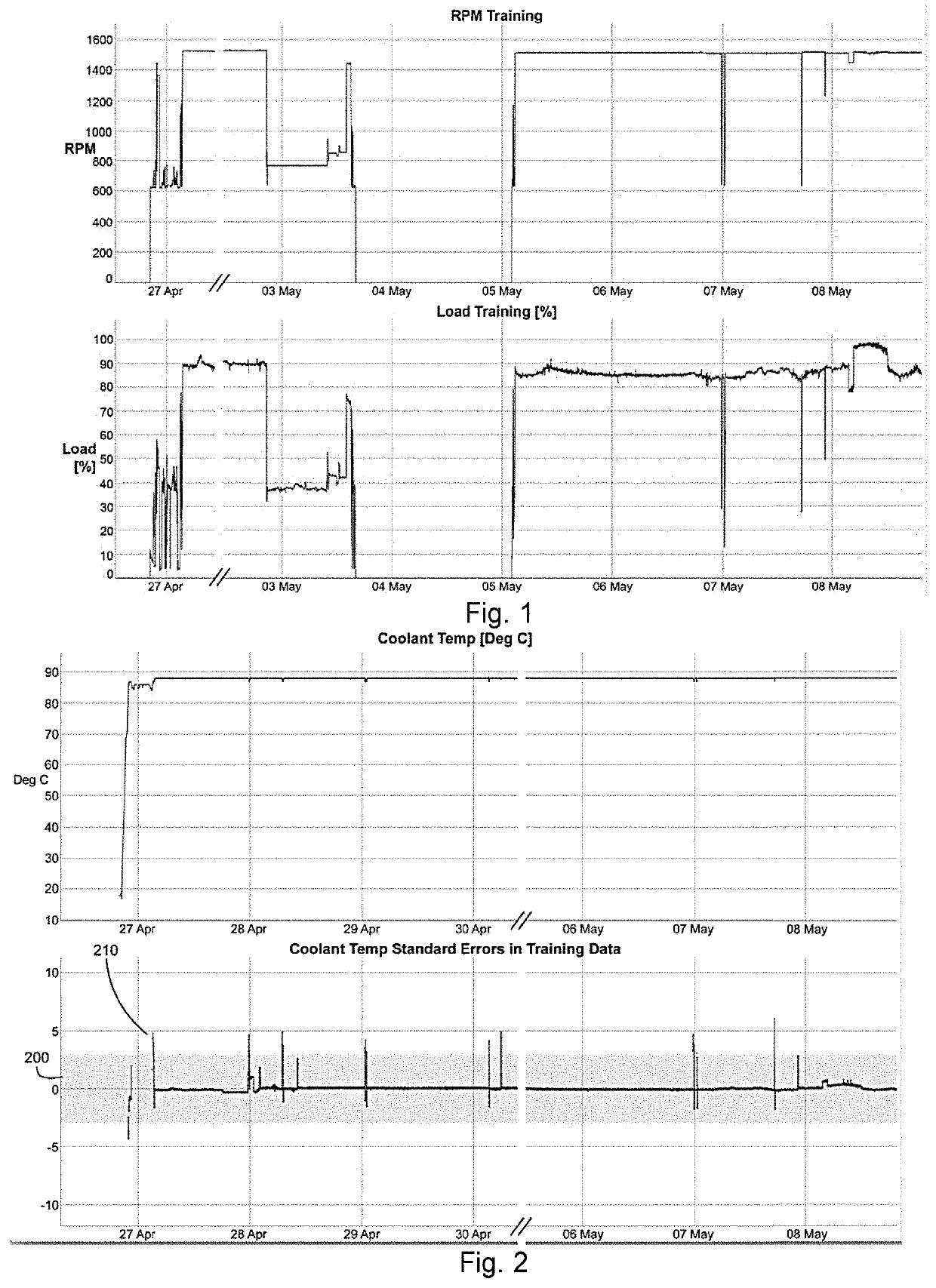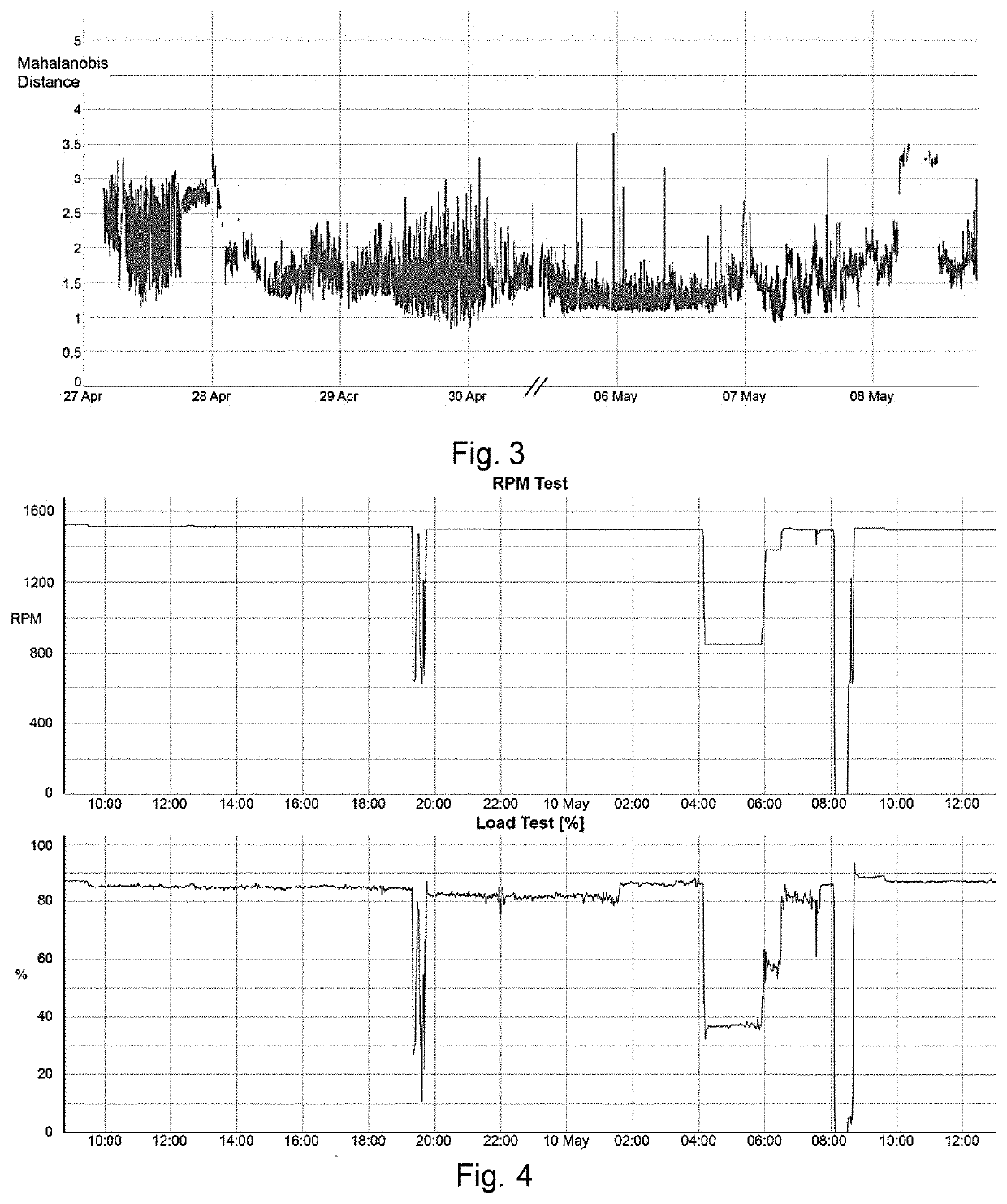Near real-time detection and classification of machine anomalies using machine learning and artificial intelligence
a machine learning and artificial intelligence technology, applied in machine learning, biological neural network models, instruments, etc., can solve the problems of inability to detect anomalies in real data streams, inability to accept large computational loads, and high false alarm rates of techniques,
- Summary
- Abstract
- Description
- Claims
- Application Information
AI Technical Summary
Benefits of technology
Problems solved by technology
Method used
Image
Examples
Embodiment Construction
[0343]In some embodiments, the present technology provides systems and methods for capturing a stream of data relating to performance of a physical system, processing the stream with respect to a statistical model generated using machine learning, and predicting the presence of an anomaly representing impending or actual hardware deviation from a normal state, distinguished from the hardware in a normal state, in a rigorous environment of use.
[0344]It is often necessary to decide which one of a finite set of possible Gaussian processes is being observed. For example, it may be important to decide whether a normal state of operation is being observed with its range of statistical variations, or an aberrant state of operation is being observed, which may assume not only a different nominal operating point, but also a statistical variance that is quantitatively different from the normal state. Indeed, the normal and aberrational states may differ only in the differences in statistical ...
PUM
 Login to View More
Login to View More Abstract
Description
Claims
Application Information
 Login to View More
Login to View More - R&D
- Intellectual Property
- Life Sciences
- Materials
- Tech Scout
- Unparalleled Data Quality
- Higher Quality Content
- 60% Fewer Hallucinations
Browse by: Latest US Patents, China's latest patents, Technical Efficacy Thesaurus, Application Domain, Technology Topic, Popular Technical Reports.
© 2025 PatSnap. All rights reserved.Legal|Privacy policy|Modern Slavery Act Transparency Statement|Sitemap|About US| Contact US: help@patsnap.com



